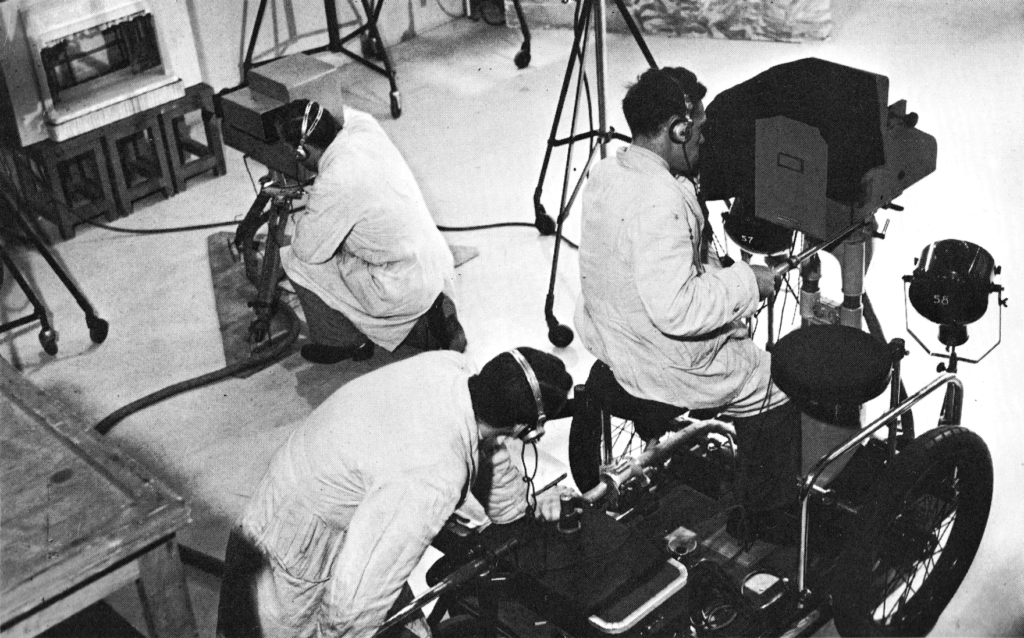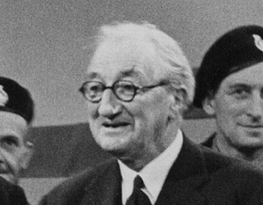Alastair Lawrence
I’ve been sent this by a canalling friend, and it’s believed to be at Brentford in 1939.
I’m guessing it’s an Image Iconoscope, and the mic is an apple & biscuit (STC 4021)?
But it must have been live, or maybe VERA? Was that around at the time? (I don’t think so).
There’s no ‘BBC’ on the camera, and I can’t identify the P&T head.
Maybe it was just a test by EMI, just up the road in Hayes? (Not necessarily one of their own cameras).
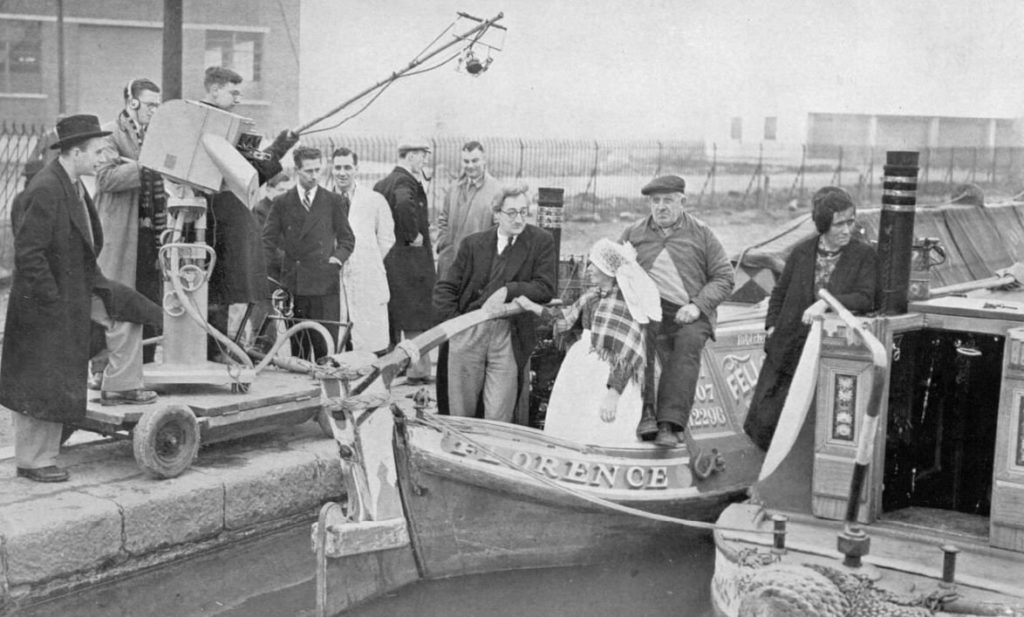
David Brunt
Almost a decade too early for VERA.
Could well be this programme. Date and venue would fit.
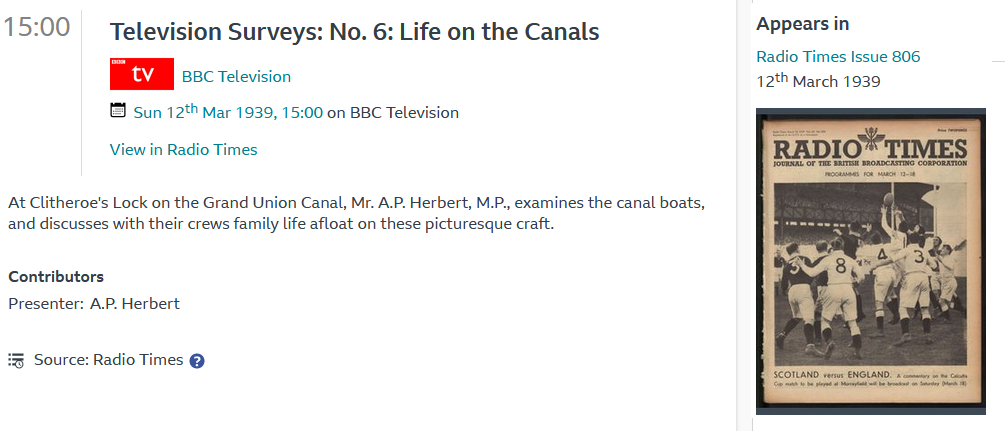
The MP must be doing the Groucho Marx impression
Alan Taylor
That’s a fascinating photograph.
The first thing that struck me is that the camera looks odd. Early cameras, such as Emitrons always had a ‘nose’ sticking out below the front. It’s usually somewhat rectangular with a rounded front, but this one is significantly thinner and more tubular. I suspect that it might be a new camera being tried out, which could explain the lack of the BBC logo. Perhaps somebody more knowledgeable about early cameras could throw some light on exactly what it is?
I’m pretty sure that the microphone in the boom is a “B type” ribbon mic. They were a variant of the studio “A type” ribbon mics, but modified to be more wind resistant and lighter. It offered a figure of eight response. Directional pick up would have been advantageous compared to the omni dynamic microphones available at the time.
The actual boom arrangement is curious and possibly rather cumbersome to operate. It looks as though the microphone could be panned ( but maybe not tilted ) remotely. I’ve seen pictures of comparable booms, but they have never shown the other end in sufficient detail to work out if or how the microphone could be panned operationally while the boom is hand held.
The broadcast would have been a live transmission, using a radio link for the video to the mast at Swain’s Lane and then onwards via co-ax cable to Alexandra Palace. I think the sound in those days always went to A.P. via post office lines.
There’s a fair chance that the guy in the white coat, seen below the boom, is an engineer. They were often seen wearing that type of coat on location.
If anybody lives close to that area, they might be able to see how it looks these days.
Alec Bray
Isn’t the ped an “ironman”?
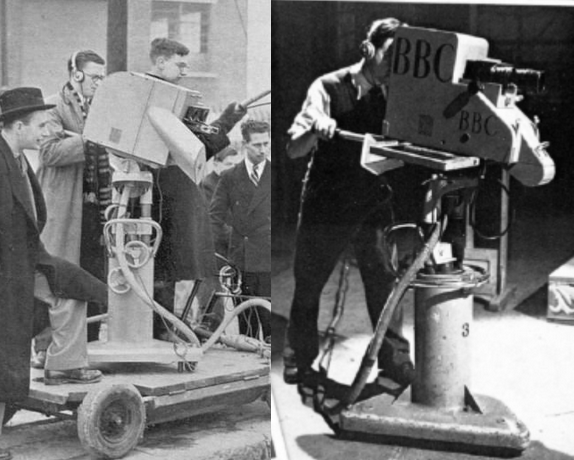
Alan Taylor
I mentioned how I suspected that the camera in that picture was being tried out. I’ve now found another picture showing what could be the same type of camera, but unfortunately the quality of the photograph is pretty dreadful. The fact that the same type of camera was seen being used on different shows does imply that it was used routinely.

My initial thought was that it might be a super Emitron camera, but the only photo I can find of one is substantially different to this camera.
I’m also puzzled about the microphone boom in this picture. It would have been good to find a better quality image, or images from other angles. The boom seems to have an angled support ( somewhat like a Cox rod on OBs ), but it’s not clear what’s happening to the other end of the boom and how it’s supported.
Chris Woolf
Early iconscopes and Emitron tubes mounted the electron gun at a forward angle, since the mosaic face had to be scanned on the same side as the optical image. Although most pictures show the gun tube directly below the lens barrel, I’m not sure there was any technical reason why it couldn’t be offset at a different angle – which is what it looks like in this picture. These cameras were pretty well one-offs so it may have been something they tried out. Very hard to see, but the lens panel could have been a rotatable version? Which might explain why they would have tried shifting the electron gun round to that odd, squiffy position.
Simon Vaughan
I’ve attached a photo of a Super Emitron at the 1948 Olympic games [below]. It matches with the photograph from Chris, albeit 9 years and a world war apart!
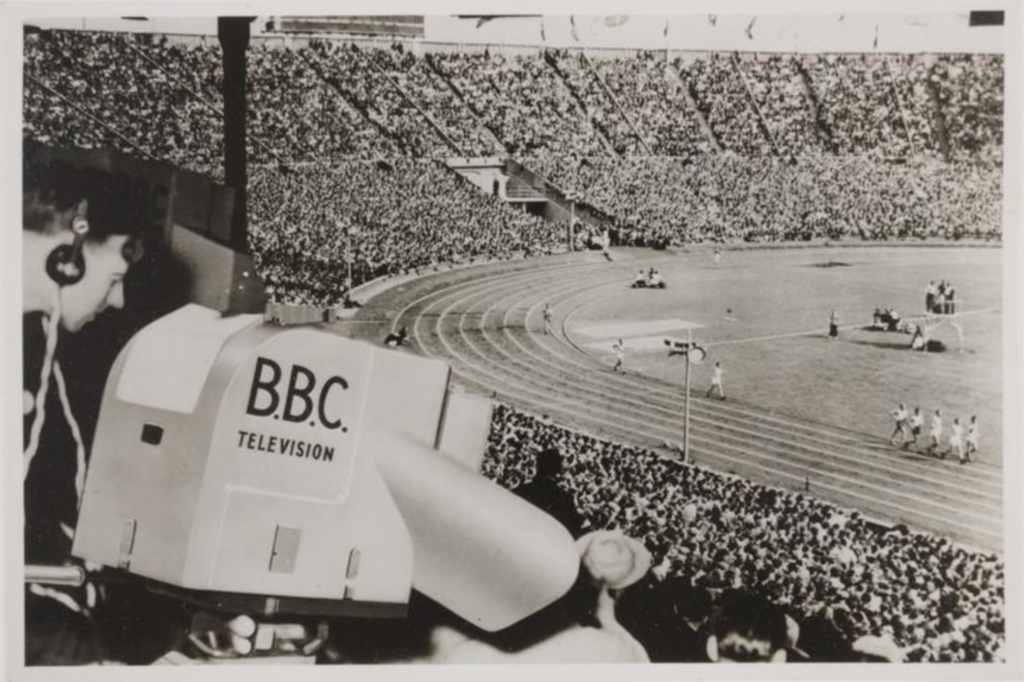
There were two versions of the Super Emi – the ‘curved back’ and the ‘square back’. The square version was believed to be a retro fit conducted by EMI on existing Emitron camera cases (see below).
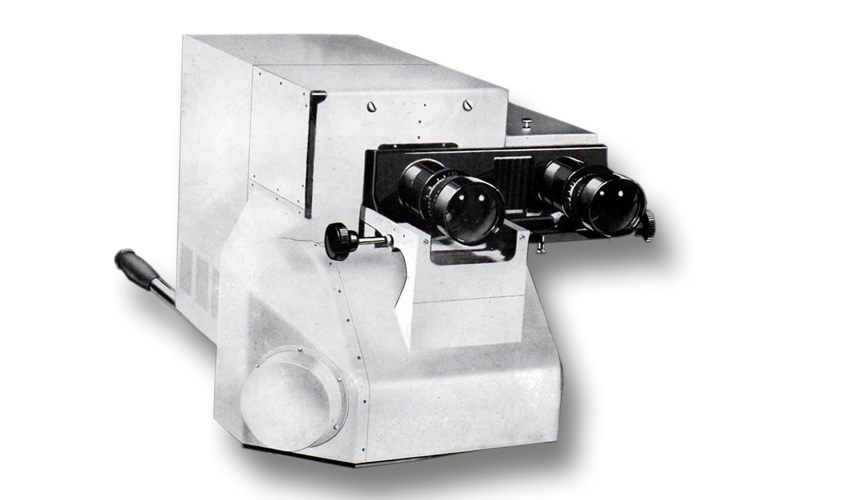
OB’s were the first to benefit by having the Super Emi’s, due to their ability to work in low light levels, as compared to the standard Emitron.
“Wireless World” (in their issues of 18th November 1937) reported the first use of the Super Emitron at the the Lord Mayors Show OB on the 9th November.

Although a few Super Emi camera tubes survive in museums no actual camera heads are known to exist.
The (pre-war) tx date from David would match with the image as pre-war cameras did not have BBC insignia on their cases. They only gained the lettering from the resumption on the service in 1946.
John Trenouth (former Television Curator at the National Media Museum in Bradford) has stated:
“… The BBC have three Emitron camera heads. One is on display; one is in storage and the third is on loan to the Media Museum.
The Media Museum also have an Emitron head of their own – ex Science Museum with an acrylic panel fitted on the side so you can see inside. This is the only Emitron that has a complete chain, cable, CCU & PSU.
There is also an example of an Emitron head belonging to EMI in the Black Dyke stores at Bradford. That makes a total of 5 heads. They all have minor differences due to being hand built. There is a rumour of a very incomplete sixth example, but I was never able to run it to earth.
We also hold a Super Emitron tube, but no complete Super Emitron camera head is known exist…”
We have an Emitron camera tube in the Alexandra Palace Television Society (APTS) equipment archive, donated by Monique, the widow of Norman Taylor.
From “Wireless World”
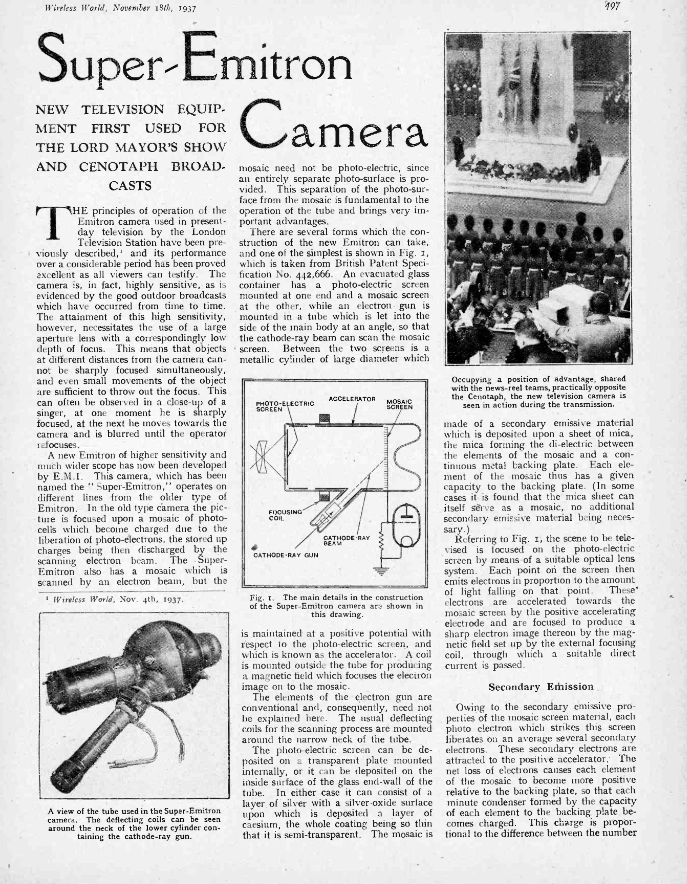
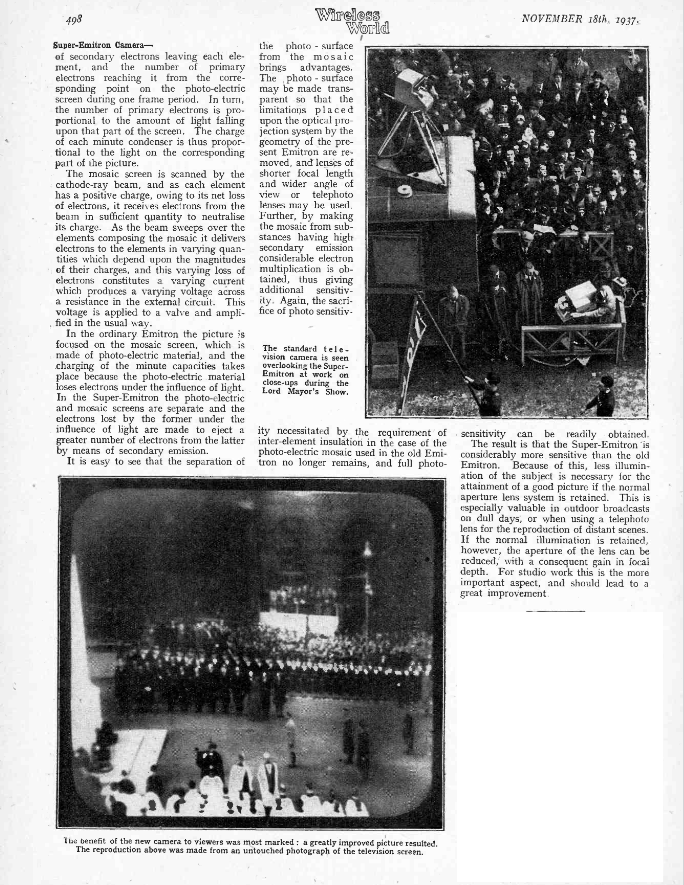
Alan Taylor
Simon has confirmed that, as we suspected, the camera at the canal OB was indeed a super Emitron. I’ve made a composite picture of the three images for comparison and I can’t spot any differences between the Canal camera and the Boat Race camera, it could even be the same one used each time. There are superficial differences with the Olympic camera, but clearly they are all fundamentally the same type of camera.
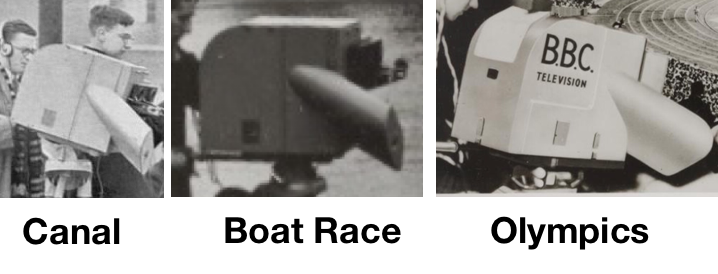
The super Emitrons were so much more sensitive than standard Emitrons that there are accounts of football matches taking place in failing light. The scanner had only one super Emitron, so there came a point where match coverage routinely continued on just that one camera after the standard Emitrons could no longer cope.
Nick Ware
In May 1957 my Dad gave me a book called “How and Why it Works” published by Odhams.
It basically got me interested in all things technical in my last year at a school, a school that had little interest in teaching the sciences. They were all about sports and non-technical things. Little did I know then that four years later I would be working at the BBC.
However, I never saw a TV camera like this! But, I had made a simple oscilloscope using a 6” cathode ray tube like the one shown on the left.
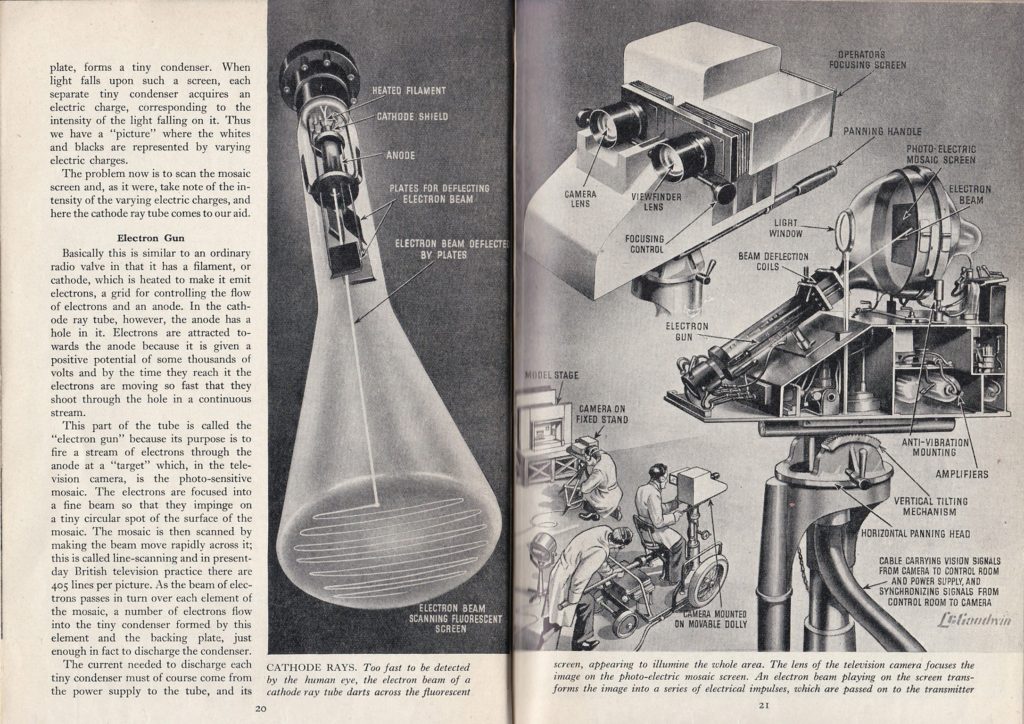
Simon Vaughan
I know the book well, it inspired my interest in TV, but from a historical perspective. I think it was originally published in the late 1940s, but had subsequent reprints.
The ‘model stage’ depiction – bottom left (right-hand page) is from “The Sleeping Princess”, featuring Margot Fonteyn, TX March 1939.
Attached is the original photograph from the studio production which was used for the drawing.
